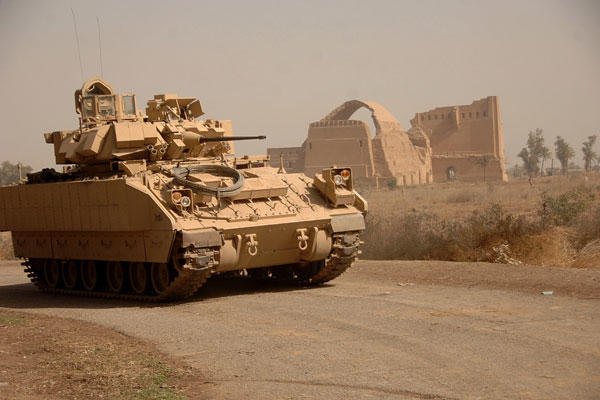Lawmakers recently cut most of the funding for the U.S. Army's Ground Combat Vehicle -- a move that has all but killed the high-profile acquisitions effort. Congress voted last week to cut GCV funding by $492 million, or 83 percent. That leaves the Army with $100 million instead of the $592 million it had requested to continue developing the program in fiscal 2014.
The move, which basically turns the program into a research effort, came as no surprise to acquisition experts who have watched the ambitious program's decline over the past several months.
Automatic, across-the-board reductions, known as sequestration, as well as the recent government shutdown and the stop-gap funding measure known as a continuing resolution have forced top Army officials to consider cutting key programs such as the GCV, the Armed Aerial Scout helicopter, and the battlefield communications network.
The Defense Department faces about $500 billion in automatic cuts through 2021. That's in addition to almost $500 billion in reductions already included in 2011 deficit-reduction legislation. The first installment totaled about $37 billion and began March 1 after lawmakers were unable to reach an alternative agreement on taxes and spending.
"Congress cut a program they knew was doomed," said Loren Thompson, who heads the Lexington Institute and also has multiple financial connections within the defense industry. "The Army had already decided the GCV is not feasible in the near term."
The funding cut to GCV is a blow to BAE Systems Plc. and General Dynamics Corp., which have been developing the futuristic battle wagon.
"I think that BAE and GD were always suspicious that the Army would not follow through beyond technology development on GCV," Thompson said, referring to the service's track record of killing top modernization programs such as Crusader, Comanche and Future Combat Systems. "At some point here, you lose credibility because you don't ever stick with a plan."
The Army may try to save face by delaying GCV development, but it's more likely that the service will submit a new set of modernization priorities, one that puts a new focus on the Armored Multi-Purpose Vehicle program, Thompson said.
The boxy, outdated M113 is still in use but has long been unable to keep up with faster battlefield vehicles such as the Bradley and the M1 Abrams tank.
The Army could modify the Bradley to replace the M113 by removing the turret to free up space for additional squad members, a much cheaper solution than trying to hold onto the overpriced GCV, Thompson said.
"The replacement for the M113, the AMPV, has now overtaken the GCV as the top armored modernization goal," he said.
-- Military.com Associate Editor Brendan McGarry contributed to this story.


























